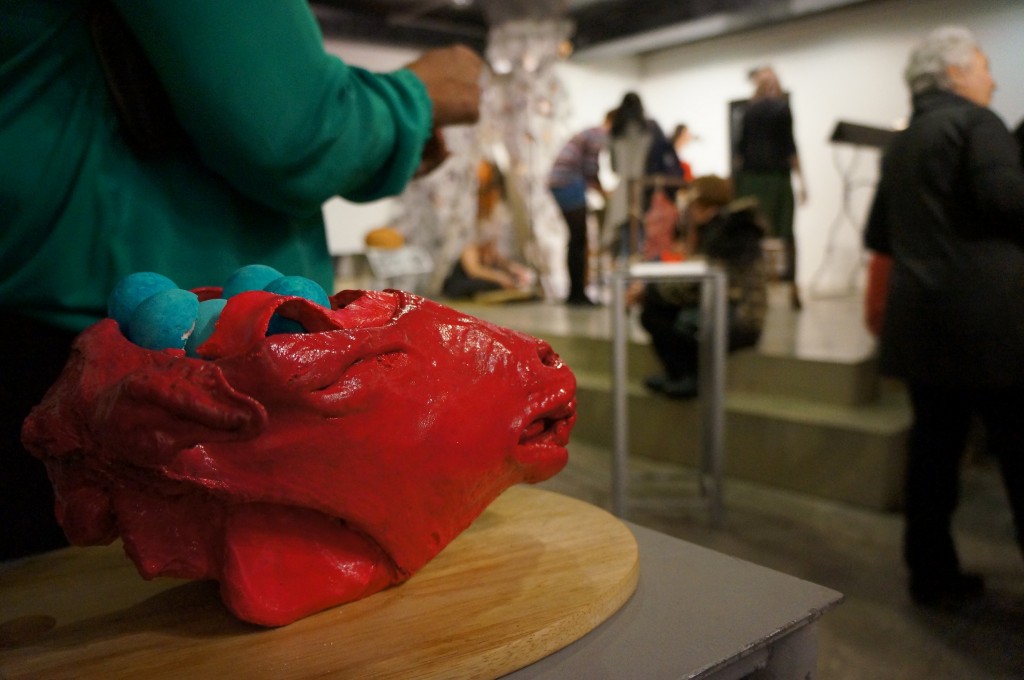An exhibition featuring paintings, installations, sculptures, graphics and other art objects related to food was held from Dec. 29 to Jan. 9 at the Tengri Umai Contemporary Art Gallery in Almaty. It was arranged as part of the international art project Pirtoy. The event displaying art works of 30 artists from Kazakhstan, Russia and Kyrgyzstan attracted much attention.
The Pirtoy art project is a self-organised initiative of the artists and art curator with the support of partners. Exhibition organisers intended to create an unusual show presenting not only the art works, but also giving visitors the opportunity to meet and talk with the artists.
“People can come to the gallery, bring their meals and enjoy the sumptuous banquet in a creative atmosphere. The main idea of Pirtoy is to provide a space for communication and dialogue in a situation where the dialogue seems impossible. We believe in dialogue as a way to solve the problem and create new ideas to overcome divisions and expand borders between the public and artists. The works presented are made of food and related to food but the audience talks and thinks not about the food. The mission of the project is to destroy the autonomy of art as the visitors are free to communicate with the artists and discuss the pressing issues,” said Yana Malinovskaya, an art curator.
According to Malinovskaya, nowadays a Russian feast as a form of collective relations has degenerated into different forms of festive pastimes, but kept the idea of something more than just eating and drinking.
“When we say ‘feast,’ our cultural memory suggests ‘a feast for the whole world.’ This word gives us an image of a large-scale ritual act, which brings together people at the table. A shared meal is important for keeping our traditions as an act of culture. The rules during the feast have a social and educational function,” she added.
“Typically, an art curator has an idea of the artistic practice of different creators. Therefore, a project supervisor knows what authors to invite and what kind of works to present in a particular show. In regard to this project, I knew some artists were working in the same direction as our project and they were ready to participate. I especially invited the young artists with whom I previously cooperated during the ‘We Are the River’ exhibition,” the organiser said.
Earlier, Malinovskaya organised two international art residencies and exhibitions at the Divnogorie Museum-Reserve, the Contemporary Japanese Cultural Festival in Moscow and the Eight River project at the Ile-Alatau National Park in Kazakhstan, as well as solo expositions of Kazakh and Russian artists. But she admitted that she has special feeling towards the organisation of Pirtoy.
“To me, curatorial studies of artworks, the development of project concepts and project discussions with the artists are essential activities. But the exhibition organisation fully depends on funding as it is a self-organised project. We certainly would like to present the exhibition in Bishkek and Moscow. Unfortunately, our budget was only enough for an exhibition in Almaty. Although this is a major achievement too,” she explained.
The art curator noted that self-organised art initiatives are a rather unusual practice in Central Asia.
“There are few contemporary art institutions and there are no modern art schools at all. Young authors do not feel any confidence and independence. There are also some local causes of this situation. Due to this, Pirtoy is a really interesting project as it was successfully launched. It is a good, new experience of communication. Today, it is important to be ready for conversation. I am grateful to all the spectators, participants and partners for this wonderful joint artistic dialogue,” she said.



